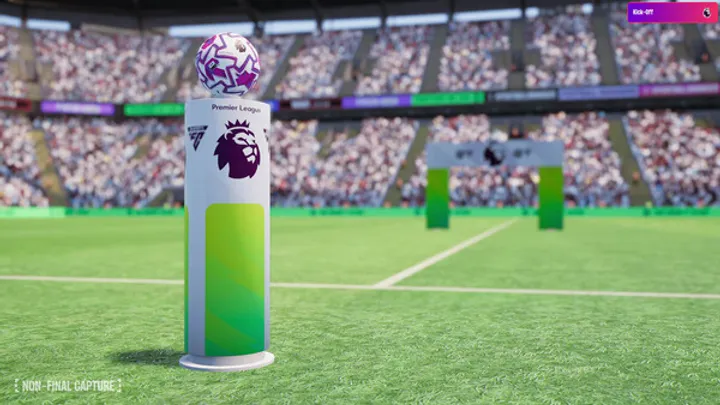The EA SPORTS FC franchise stands at a turning point. After parting ways with FIFA, EA’s rebranding wasn’t merely a name change — it was a declaration of creative independence. EA SPORTS FC™ 26, the series’ third entry under the new banner, pushes further into the philosophy of authentic realism — using artificial intelligence, motion data, and adaptive systems to make virtual football indistinguishable from the real game.
But with that ambition comes a deeper question: can realism enhance joy, or does it risk suffocating it? As FC 26 introduces increasingly complex systems — from AI tactical behavior to biomechanical animations — players are experiencing a new kind of immersion that both empowers and alienates. This article dissects the issue of realism versus playability, tracing how EA’s quest for authenticity has evolved, what it sacrifices, and where it leads the future of digital sport.
The Post-FIFA Identity
When EA split from FIFA, it lost a legacy but gained creative freedom. No longer tethered to the licensing bureaucracy of the federation, EA SPORTS reimagined its series under the banner of The World’s Game.
The challenge was monumental: to rebuild brand trust without the globally recognized FIFA label. FC 24 laid the foundation. FC 25 experimented with smarter player movement and expanded leagues. And now FC 26 — positioned as the “most authentic football simulation ever built” — marks the culmination of that new identity.
Yet identity is more than licensing. It’s about how the game feels. EA has doubled down on realism as the new religion of football simulation.

The Rise of HyperMotion V and AI Realism
The centerpiece of FC 26’s transformation is its expanded HyperMotion V technology — a motion-capture system that uses volumetric data from over 200 professional matches.
Instead of animating players through manual mocap sessions, EA now captures entire games to analyze real body mechanics. Every sprint, tackle, and pivot is converted into training data for its proprietary AI model. The result: players move not as avatars, but as data-driven reflections of real athletes.
- Positional AI now mimics team tactics observed in actual leagues.
- Collision physics adjust dynamically based on angle, weight, and fatigue.
- Player animations vary subtly, mirroring real-life biomechanics.
The line between simulation and broadcast presentation continues to blur — but with it, some players feel the soul of arcade fun slipping away.
Realism vs. Responsiveness
This is the crux of the FC 26 debate: while realism grows, responsiveness suffers.
Players report that more authentic animations sometimes slow down reaction times. Dribbling feels weightier, turns take longer to register, and collisions unfold with cinematic precision — but not always competitive fluidity.
In online play, milliseconds matter. The same detailed animation that impresses offline can frustrate in Ultimate Team matches where speed and reaction define outcomes.
EA faces a paradox: realism looks spectacular, but control must always come first in a competitive context.

Data as Design: When Analytics Drive Gameplay
Beyond visuals, FC 26 embraces data as its design foundation. Every decision — from AI behavior to tactical balance — is informed by real-world performance analytics.
For example:
- Defensive lines adjust spacing based on real heatmap patterns.
- Passing accuracy fluctuates by position and real-life averages.
- AI pressing intensity reflects club tendencies recorded in live datasets.
This shift turns FC 26 into a kind of football simulator powered by predictive modeling. But it also introduces a philosophical problem — when games chase statistical authenticity too closely, creativity risks becoming constrained. The magic of football lies not in averages, but in unpredictability.
The Human Factor: Emotion vs. Precision
One of the quiet revolutions in FC 26 is its emotional animation engine, which maps not just movement but expression. Players display subtle reactions — frustration after missed shots, relief after tackles, exhaustion near the 90th minute.
These touches add cinematic depth, yet they also underscore a question: can emotion be simulated authentically, or only imitated?
While the system aims to reflect humanity, some players feel that authenticity has become mechanical. When every frown or cheer is algorithmically timed, emotion becomes part of the data pipeline rather than the soul of play.
Ultimate Team and the Realism Dilemma
Ultimate Team remains the financial core of EA SPORTS FC, but it sits uneasily within the realism paradigm.
In a mode built around assembling dream rosters across eras, hyperrealistic gameplay creates friction. Seeing legends like Zidane or Ronaldinho move with biomechanical precision inside a fast-paced fantasy ecosystem feels paradoxical — too real for fantasy, too fantastical for realism.
EA has begun separating tuning parameters between modes, allowing competitive play to remain tight while preserving spectacle elsewhere. Yet this solution reveals how realism can’t be universal; it must adapt to contextual truth, not absolute truth.
Women’s Football and True Representation
One area where FC 26’s realism achieves something profound is in women’s football integration.
The series has evolved from token inclusion to full parity: mixed-gender Ultimate Teams, authentic women’s leagues, and advanced body motion capture for female athletes. These aren’t aesthetic additions — they are structural changes reflecting a broader truth of modern football.
However, the same realism push creates uneven expectations. Some players note disparities in animation fidelity between male and female models. Authenticity demands consistency — and that remains a work in progress.
Community Division: Simulation Purists vs. Arcade Loyalists
EA SPORTS FC now faces a divided community.
- Simulation purists praise the authenticity, comparing it to the early Pro Evolution Soccer golden era.
- Arcade loyalists argue that EA has overcorrected — that joy has been traded for inertia.
This divide reflects a deeper cultural shift in sports gaming: is football meant to look real or feel real?
Online feedback, modding communities, and competitive leagues now act as public testing grounds, shaping the evolving identity of the franchise.

The Developer’s Balancing Act
Behind FC 26’s realism lies a delicate engineering balance. Developers must fine-tune every system — input lag, frame timing, animation blending — so realism doesn’t compromise responsiveness.
EA’s internal philosophy documents, leaked in interviews, describe this as the “Perceived Playability Equation”: the point where realism and responsiveness intersect just before frustration outweighs immersion.
This iterative tuning process is why each yearly release alternates between “too fast” and “too heavy.” Realism isn’t a linear upgrade; it’s an ongoing negotiation between data, feeling, and fun.
The Future of Football Realism
If FC 26 represents the present, FC 27 will likely mark the future — one defined by machine learning feedback loops. Player input data will soon teach AI how people want the game to feel, creating adaptive realism that responds to play style.
This self-correcting ecosystem could solve the authenticity-playability conflict by learning from the collective global user base.
But such systems raise new questions about ownership: when the game learns from millions of players, who owns the experience — the developer, the player, or the data itself?
Conclusion
EA SPORTS FC™ 26 embodies the modern gaming paradox: the pursuit of realism as both innovation and limitation. Through data, AI, and emotion modeling, it achieves unprecedented fidelity — but also exposes how fragile authenticity becomes when stripped of spontaneity.
Real football is imperfect. It’s human. And perhaps that’s the lesson FC 26 needs to learn next: in chasing reality, never forget to leave space for the unpredictable joy that makes the game beautiful.

















